Rodin Is Commonly Called the Father of Modern Due to His Innovative Ways of Creating Art
Rodin and Arp, figuration and sculptural abstraction
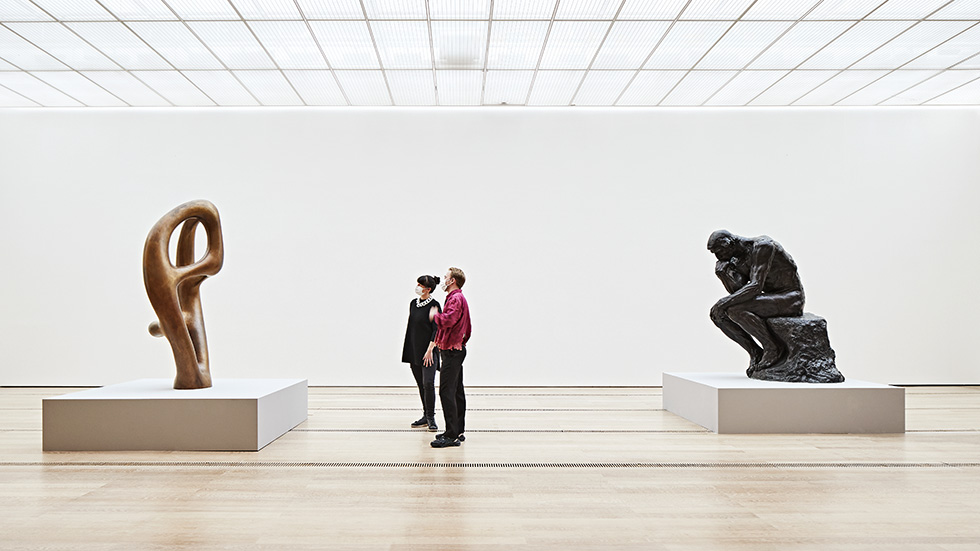
A slap-up tandem of masters although they probably never met. The French Auguste Rodin is considered the father of modern sculpture and Arp played a key part in XX Century Abstruse Sculpture with his organic biomorphic shapes. Rodin, figurative, concentrated on working with bronce while Arp, abstract, preferred the marble.
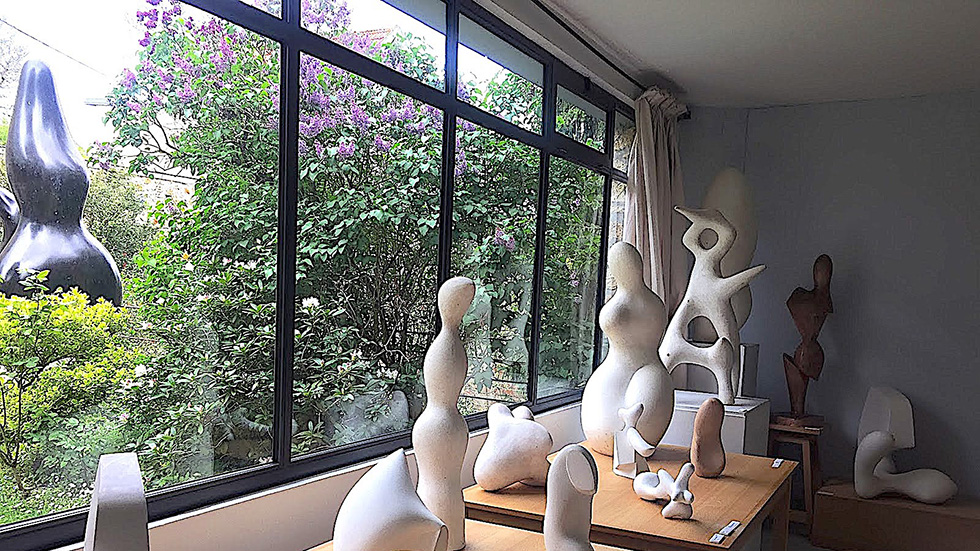
For the first time, a museum brings into dialogue this ii genius. We can run into an original join exhibition of both artists, thank you to three museums: it was conceived past Fondation Beyeler, Basel (Switzerland), in cooperation with the Arp Museum Bahnhof Rolandseck, Remagen (Federal republic of germany) and the Musée Rodin, Paris.
The ii peachy sculptors, Auguste Rodin and Jean Arp created works that marked their time and have remained art icons to this day. Rodin lived in Paris in the fourth dimension of Impressionism (1840–1917) and one-half a century after, Jean Hans Arp was born, a French High german sculptor, painter and poet (1886–1966), one of the founders of Dada movement.
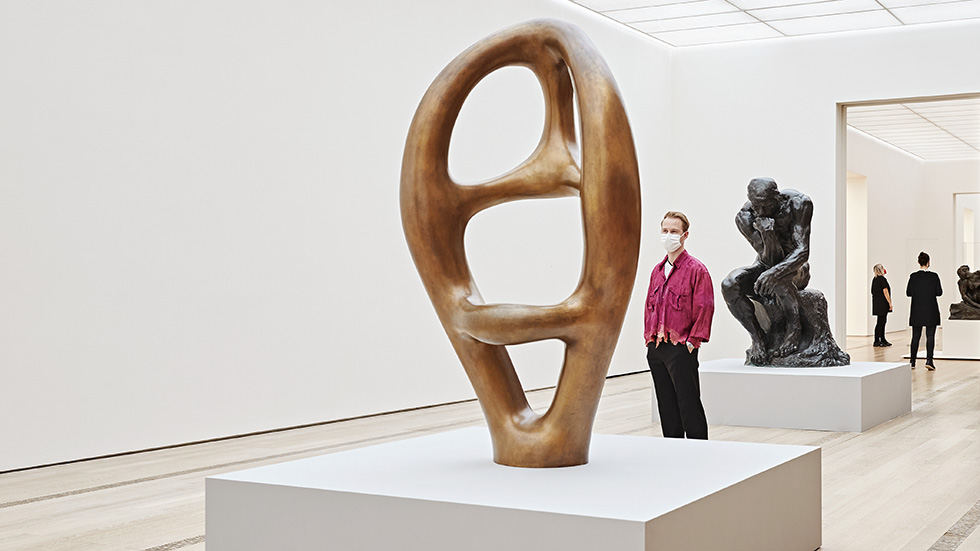
Comparing his ii artists shows the incredible groundbreaking transformation of sculpture. Each one immersed in a different era and yet, they are both characterised by a unique artistic innovation and joy of experimentation.
The exhibit starts with the well-nigh famous figure past Rodin, The Thinker, standing in front end of Arp'south Ptolemy, honouring the philosopher who shaped the geocentric view of the universe. So both works together represent the dialogue between two historic thinkers. Further more, this combination embodies the extraordinary transition from figurative to abstract sculpture: from Rodin to Arp.
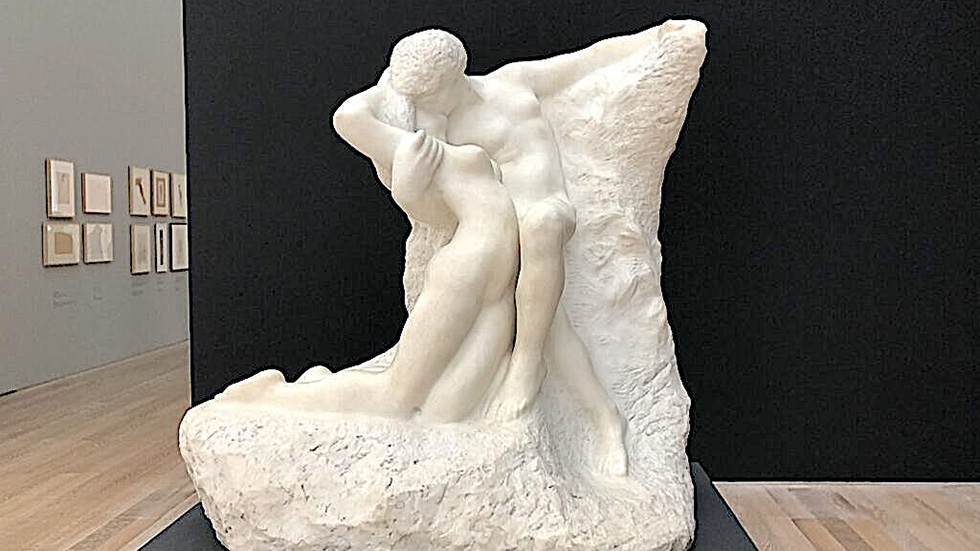
Since I already wrote an article on Rodin (Neomania #36) this time, we will focus on Jean Arp.
I practice not want to reproduce. I want to produce .
Jean Arp
Many people think that Arp's original name was Hans and he inverse information technology to Jean. But he simply referred to himself as Hans when he spoke in German language and Jean when he was in France. With a French mother and and German father, he adopted both cultures and spoke two languages. Born in Strasbourg, he went to different art schools to hone his craft non only in poetry but also in sculpture and painting, including the famous Academie Julian in Paris.
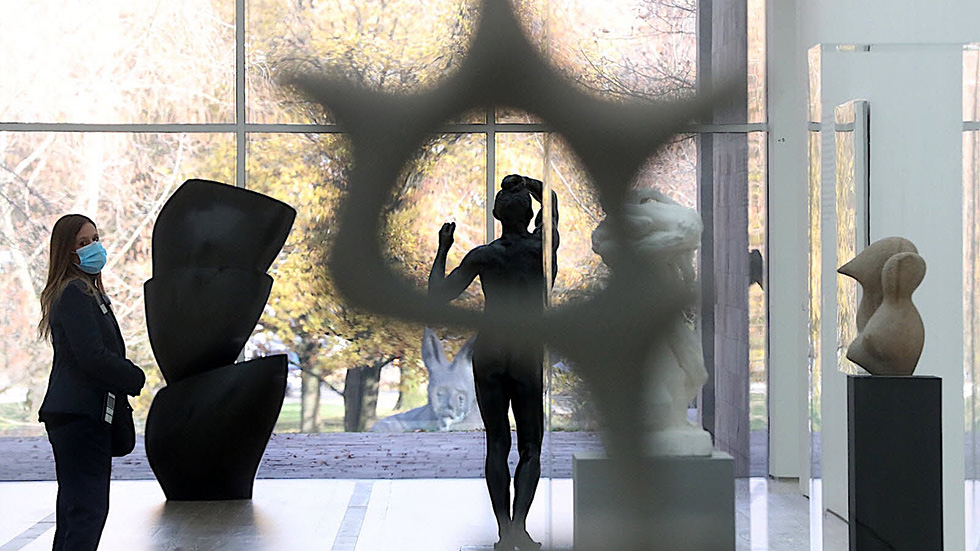
Arp started his career as a poet and published his first poetry in 1904 in Paris. He travelled a lot, taking advantage of the opportunity where he could show his works and grow as an artist. In 1905, Arp went to Weimar (Deutschland) and studied in the famous Bauhaus fine art school for two years. He was encouraged past Kandinsky, the influential Russian painter and art theorist. They both exhibited with the Der Blue Reiter group.
Subsequently Arp was a founder- member of the Moderne Bund (Modern Brotherhood), 1 of the primeval associations that encouraged contemporary art in Switzerland. The group did well, making a mark in the civilisation and arts of the country.
Since moving to Zurich (Switzerland) in 1912, he joined a major painting exhibition with renowned painters similar Henri Matisse, Wasilly Kandinsky and Robert Delaunay. There he met Sophie Taueber, dancer and creative person.
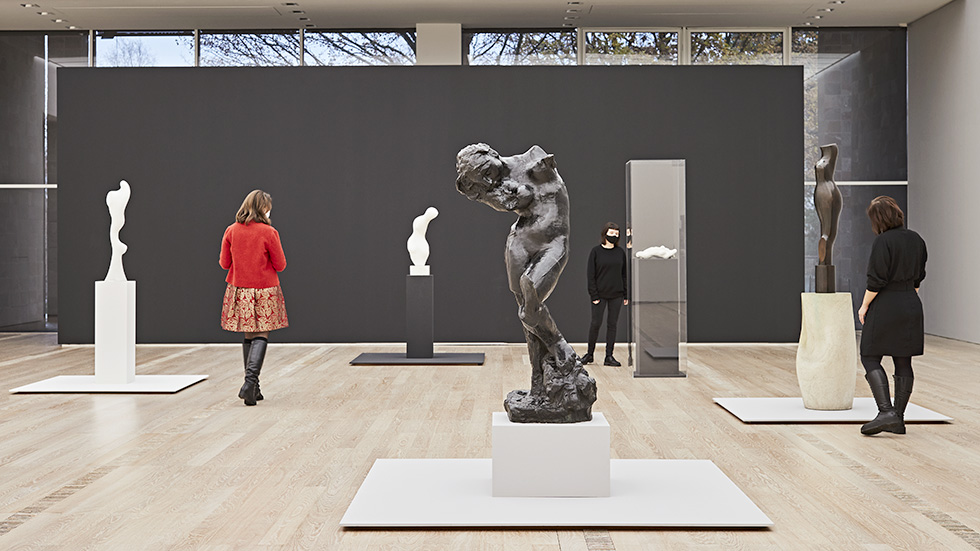
Jean Arp was also a founding fellow member of Dada. Dadaism was an fine art movement of the European advanced in the early 20th century, with its heart at the Cabaret Voltaire in Zurich. They rejected logic, reason, and aestheticism of modern capitalist society. Instead they expressed nonsense, irrationality and anti-bourgeois protest in their works. The motility spanned visual, literary and audio media, including collage, sound verse, writing and sculpture. Dadaist artists and poets were against violence, war and nationalism. Their art was a battle-cry to stop World State of war I.
Jean Arp fue miembro fundador del Dada. El Dadaísmo fue un movimiento artístico de la vanguardia europea de principios el siglo XX, con su centro en el Cabaret Voltaire de Zurich. Rechazaban la lógica, la razón y el esteticismo de la sociedad capitalista. En cambio, con sus obras ensalzaban las tonterías absurdas, irracionalidad y protesta anti-burguesa. El movimiento abarcó medios visuales, literarios y sonoros, incluidos el collage, la poesía sonora, la escritura y la escultura. Los artistas y poetas dadaístas estaban en contra de la violencia, la guerra y el nacionalismo. Su arte era un grito de protesta para poner fin a la Primera Guerra Mundial.
Arp was very popular every bit he was associated and founder of unlike groups and worked with renowned artists. Until the end of his life, he wrote and published essays and poetry. He also painted just mainly, he is known for his creations of very fine biomorphic sculptures. In 1942 he fled from Paris to escape German occupation and lived in Zurich until the war concluded.
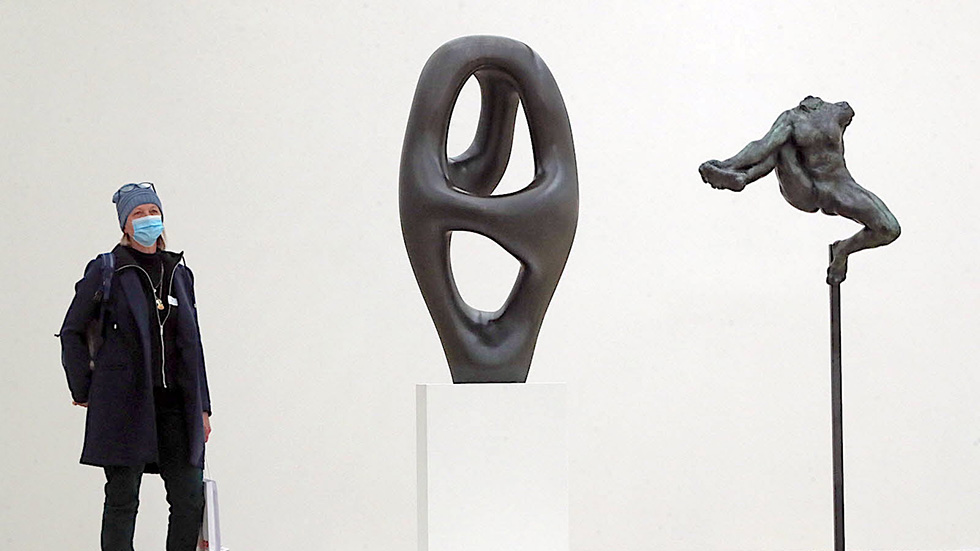
Arp visited New York in 1949 for his own exhibition at the Buchholz Gallery. In 1950 he was invited to execute a relief for Harvard University in Cambridge and commissioned a landscape for the UNESCO building in Paris. Some of his awards include the Venice Biennale, Pittsburgh International, Carnegie Prize, Grand Prix National des Arts, University of Hamburg's Goethe Prize and the Social club of Merit in Germany.
At that place are three Arp foundations in Europe: Fondation Arp in Clamart (France) preserves the atelier where he lived and worked. Fondazione Marguerite Arp-Hagenbach was founded by Arp'due south 2nd wife in Locarno (Switzerland). The Stiftung Hans Arp und Sophie Taeuber-Arp was established by dealer Johannes Wasmuth who owns his largest collection and holds the copyright of all his works with a research center in Berlin.
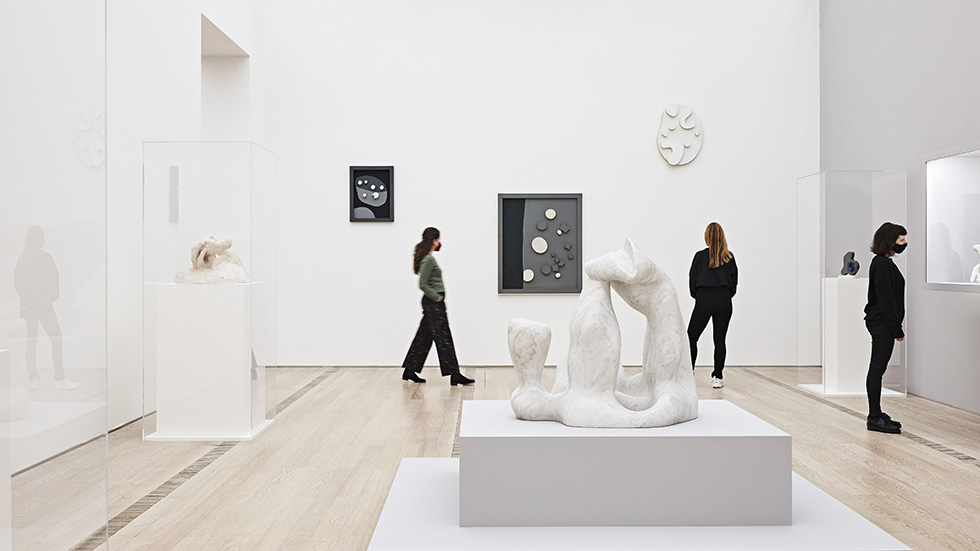
I allow myself to be guided by the piece of work which is in the process of being born, I accept confidence in it. I exercise not think well-nigh information technology. The forms go far pleasant, or strange, hostile, inexplicable, mute, or drowsy. They are born from themselves. Information technology seems to me as if all I do is motion my easily.
Jean Arp| "Arp on Arp", 1958
"Rodin/ Arp" at Beyeler Foundation, with around 110 works from international museums and private collections, is one of the most all-encompassing sculpture exhibitions always staged. It brings together many iconic works by both artists also as rarely shown sculptures, reliefs and works on paper.
Rodin introduced transformational ideas and new artistic possibilities, which Arp after took up, developed, reinterpreted or contrasted in his biomorphic shapes. The two artists' exceptionally prolific and varied oeuvres display many artistic affinities and shared references, also equally marked differences, turning the confrontation of their distinctive works into a particularly revealing visual feel.
The exhibition pairs the groundbreaking work of late 19th-century sculpture's corking reformer with the influential piece of work of a major protagonist of 20th-century abstract sculpture. If I had to cull the main signal in mutual, is that both artists displayed exceptional creative creativity and enthusiasm for experimentation. Their piece of work left a deep banner on their times and retain their full relevance to this day.
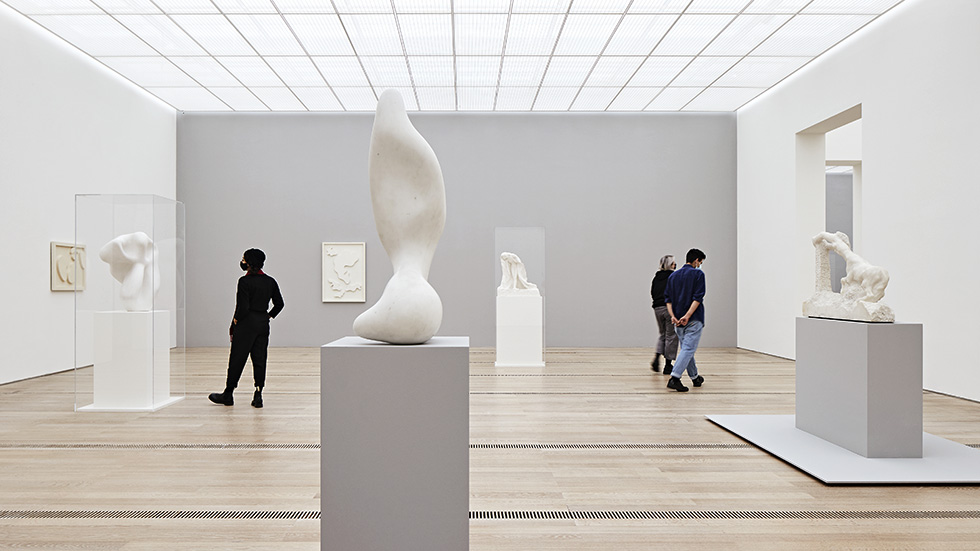
The sculptural milestones created by Rodin and Arp provide remarkable illustrations of primal aspects in the development of modern sculpture.
Beyeler Foundation is celebrating its reopening in March 1st. They were forced to close a calendar week after opening in December due to the second pandemic lockdown. The prove has been extended to May 2021.
Sculpture should walk on the tips of its toes, unostentatious, unpretentious, and lite every bit the spoor of an beast in snow. Art should cook into and even merge with nature itself. This is obviously reverse to painting and sculpture based on nature. By and then doing, art will rid itself more than and more of self-centredness, virtuosity and absurdity.
Jean Arp | "Arp on Arp", 1958
Source: https://www.neomaniamagazine.com/rodin-and-arp/

0 Response to "Rodin Is Commonly Called the Father of Modern Due to His Innovative Ways of Creating Art"
Post a Comment